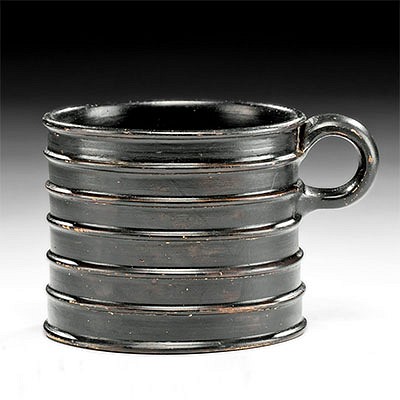Roman Marble Statue of a Perching Eagle, ex-Sotheby's
Lot 50b
About Seller
Artemis Fine Arts
686 S Taylor Ave, Ste 106
Louisville, CO 80027
United States
Selling antiquities, ancient and ethnographic art online since 1993, Artemis Gallery specializes in Classical Antiquities (Egyptian, Greek, Roman, Near Eastern), Asian, Pre-Columbian, African / Tribal / Oceanographic art. Our extensive inventory includes pottery, stone, metal, wood, glass and textil...Read more
Categories
Estimate:
$7,000 - $10,500
Absentee vs Live bid
Two ways to bid:
- Leave a max absentee bid and the platform will bid on your behalf up to your maximum bid during the live auction.
- Bid live during the auction and your bids will be submitted real-time to the auctioneer.
Bid Increments
| Price | Bid Increment |
|---|---|
| $0 | $25 |
| $300 | $50 |
| $1,000 | $100 |
| $2,000 | $250 |
| $5,000 | $500 |
| $10,000 | $1,000 |
| $20,000 | $2,500 |
| $50,000 | $5,000 |
| $100,000 | $10,000 |
| $200,000 | $20,000 |
About Auction
By Artemis Fine Arts
Mar 12, 2020
Set Reminder
2020-03-12 10:00:00
2020-03-12 10:00:00
America/New_York
Bidsquare
Bidsquare : Ancient / Ethnographic Around The World
https://www.bidsquare.com/auctions/artemis-gallery/ancient-ethnographic-around-the-world-4957
Ancient art from Egypt, Greece, Italy and the Near East, as well as Asian, Fossils, Pre-Columbian, Native American, African / Tribal / Oceanic, Spanish Colonial, Russian Icons, Fine art, much more! Artemis Fine Arts info@artemisfinearts.com
Ancient art from Egypt, Greece, Italy and the Near East, as well as Asian, Fossils, Pre-Columbian, Native American, African / Tribal / Oceanic, Spanish Colonial, Russian Icons, Fine art, much more! Artemis Fine Arts info@artemisfinearts.com
- Lot Description
Late Roman, Imperial Period, ca. 4th century CE. Finely carved from a single piece of marble, a majestic eagle perched upon a rectangular plinth with wings crossed over the tailfeathers. The bird of prey presents a noble visage with large, almond-shaped eyes, a pointed beak, and downturned mouth - as well as a robust body with feathers that densely cover the neck, breast, legs, and wings. The sculptor of this piece went to immense lengths to delineate the bird's plumage. Size: 16.75" W x 14.875" H (42.5 cm x 37.8 cm); 20.125" H (51.1 cm) on included custom stand.
The eagle was a highly-symbolic animal among the Roman military and was a great symbol of pride and victory in the eyes of the legions. Known as "aquila" in Latin, the eagle was a representation of honor, victory, and cohesiveness within a legion. One member of each legion was referred to as an aquilifer, or "eagle-bearer," as it was their primary duty to carry and protect that legion's designated eagle standard. If ever an aquila was lost or stolen, it was the primary obligation of the aquilifer to go to any lengths to recover the standard and see to its safe return. Losing an eagle standard was considered a grave omen for its respective legion and would typically lead to distrust and paranoia among the legionaries. To quote a piece of historical fiction set in Roman Britain entitled The Eagle of the Ninth (Rosemary Sutcliff, 1954), "Eagle lost, honor lost; honor lost, all lost."
Provenance: private Connecticut, USA collection, Sold at Sotheby's London, 8 July 1991, Lot 382; Anonymous sale Christie's New York, 16 June 2006, Lot 291
All items legal to buy/sell under U.S. Statute covering cultural patrimony Code 2600, CHAPTER 14, and are guaranteed to be as described or your money back.
A Certificate of Authenticity will accompany all winning bids.
We ship worldwide and handle all shipping in-house for your convenience.
#146715Expected surface wear with nicks and abrasions to high-pointed areas. Losses to peripheries of the plinth, with a pronounced loss including one talon to the left front corner section of the plinth. Still a strong piece, replete with impressive artistry and layers of symbolic meaning.Condition
- Shipping Info
-
All shipping is handled in-house for your convenience. Your invoice from Artemis Gallery will include shipping calculation instructions. If in doubt, please inquire BEFORE bidding for estimated shipping costs for individual items.
-
- Buyer's Premium



 EUR
EUR CAD
CAD AUD
AUD GBP
GBP MXN
MXN HKD
HKD CNY
CNY MYR
MYR SEK
SEK SGD
SGD CHF
CHF THB
THB















